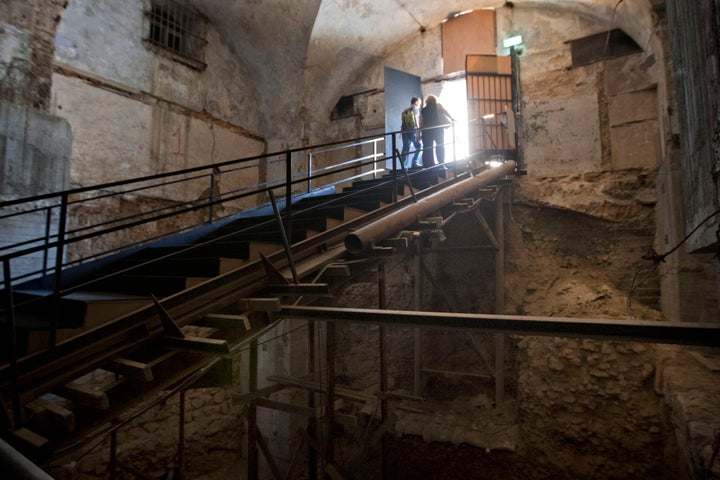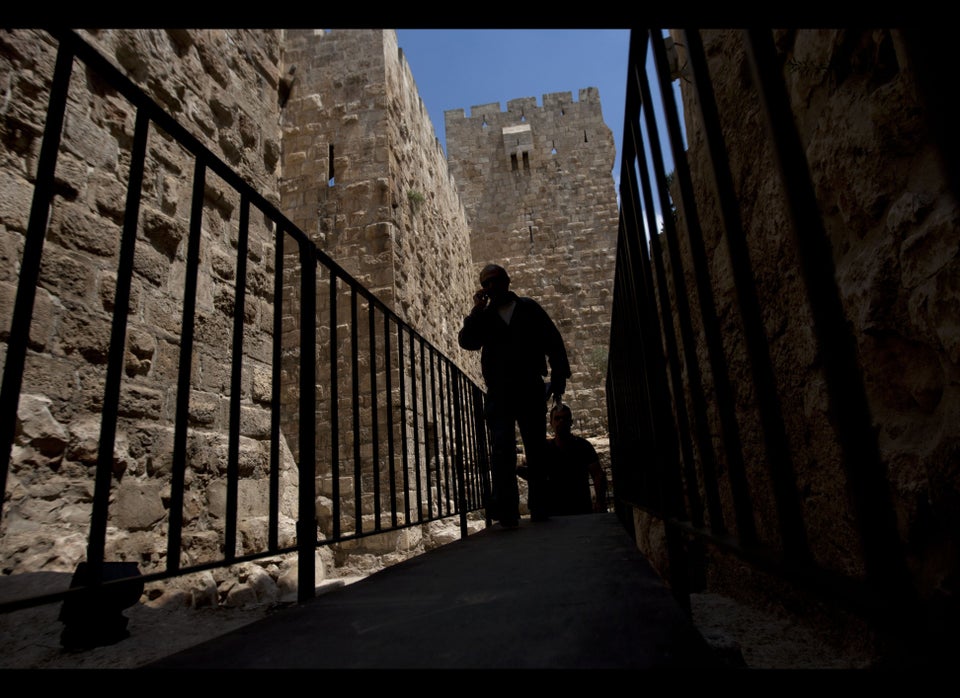
JERUSALEM (AP) -- An old Turkish prison in Jerusalem is briefly opening to the public this weekend, allowing visitors a rare glimpse inside an infamous local landmark. (Scroll down for photos)
The Kishle prison in Jerusalem's Old City was built by the Ottoman Turks in the mid-1800s. It later served the British as a jail, housing Jewish and Arab prisoners in the stormy years leading up to Israel's creation in 1948.
One of those prisoners, Samuel Matza, who was a member of a Jewish underground group as a young man, recalled sleeping on rags on the jail's floor after British police arrested him on weapons charges 64 years ago.
Matza, now 84, said Friday he hoped to visit the building again.
The old lockup has remained closed because of a lack of funds for restoration and refurbishment. It will open on Saturday for three weeks, having been temporarily transformed into a concert space for a visiting troupe of Swedish musicians.
Check out photos of the prison here, then scroll down to keep reading.
Israeli archaeologists dug underneath the Kishle a decade ago and found important remains dating back nearly three millennia, including walls built by King Herod and medieval facilities for dyeing fabric.
"On this tiny spot we have the whole story of Jerusalem, from the Judean kings to the British mandate," said Amit Re'em, the Israel Antiquities Authority archaeologist who excavated the Kishle.
The prison sits next to the Tower of David, an ancient fortress on the western flank of Jerusalem's Old City. The tower complex, used as a stronghold and palace by Herod, early Muslim rulers, Crusaders and the Jordanian army, among others, is now a museum dedicated to Jerusalem's history.
One part of the Kishle building, where Jerusalem's successive Turkish, British and Jordanian rulers stationed a garrison before the Israeli conquest in 1967, is now a police station where Israeli officers manage the volatile religious and ethnic brew that is Jerusalem's Old City. But the adjacent jail has never been open to visitors.
Matza, who went on to be a Jerusalem lawyer, was taken to the Kishle at the age of 20 by British policemen who caught him with a weapons cache. He was a member of the Irgun, a Jewish underground group opposed to British rule.
"The jail was horrifying – the conditions were terrible," Matza recounted. "We slept on the floor on rags that were full of lice and tics, it was dark, there wasn't enough air, and we slept 20 people together in one cell."
During his stay, Matza took a fork – the prisoners were not given knives – and carved the Irgun's symbol on the wall, along with the words "Long Live the Hebrew State."
At the time, it was not yet clear that this state would be founded the following year and would be called Israel.
Matza also etched his name on the wall. The graffiti is still visible, which is how Re'em, the archaeologist, tracked Matza down upon discovering it more than 50 years later.
Matza said he planned to attend the Swedish musicians' concert at the jail.
The performance of "Different Trains," a musical composition that won a Grammy in 1990, has given the curators of the Tower of David museum an opportunity to open the old prison. The concert is part of a roster of cultural events known as the Jerusalem Season of Culture.
Renee Sivan, the museum's chief curator and an archaeologist who carried out excavations just outside the Kishle, remembered finding old sardine tins, Ottoman-era shirt buttons, ceramic pipes used for hashish, and small cans of wax for moustaches of the city's long-departed Turkish rulers.
The site, she said, is a reminder of the ordinary people sometimes forgotten amid the political and religious sweep of Jerusalem's history.
"People here always lived, laughed, cried, loved, ate sardines, smoked hashish. A person was always a person, and the stones tell this story," she said.
